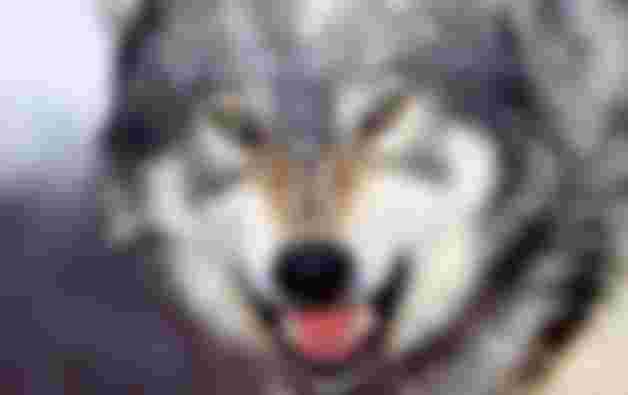The relationship between man and dog is deeply ingrained in our culture and psyche. But our best friends, as many call dogs, have not always been cute, shaggy, sympathetic and friendly. The domestic dog, Canis familiaris, is a direct descendant of the gray wolf, Canis lupus: In other words, the dogs we know today are actually domesticated wolves.
Over time and selective interbreeding, the behavior and physical appearance of these otherwise formidable predators have completely changed and adapted to life with humans. “No other species is so diverse,” says Robert Wayne, an evolutionary biologist at the University of California, who in 1997 conducted one of the largest studies related to canine genetics and evolution.
Charles Darwin believed that dogs were created by crossing wolves, coyotes and jackals, but with the help of modern science, DNA analysis and molecular biology today we know with certainty that all dogs in the world share only one common ancestor - the gray wolf.

Although you can sometimes meet a lone wolf in the wild, the normal social life of wolves takes place in a pack. The wolf pack usually consists of the parent pair and their offspring, so it is a family.
How and when the first domestication occurred is still a matter of speculation. DNA analysis published in 1997 suggests that the transformation began about 130,000 years ago. This means that wolves began to adapt to human society long before humans had settlements and began to engage in agriculture.
According to some researchers, wolves were very useful moored around the campfire to drive away other, even more terrible predators. Other researchers again claim that this is just a myth and that humans did not adapt to wolves - but wolves to humans. Some experts claim that wolves took advantage of human weakness, empathy, and thus protected themselves from extreme cold and harsh winters during which, without human help, they would surely die of starvation or freeze.
“Humans were already successful hunters and without wolves, more successful than all the other big beasts. Most likely, the wolf approached us, not the other way around, probably as they roamed around the garbage dumps on the edge of human settlements. Wolves, who were brave and aggressive, would be killed, while those who were friendly would survive. ” - Dr. Brian Hare, Director of Duke Canine Cognition Center and Vanessa Woods researcher at Duke University (for National Geographic).
Whether we domesticated the wolf, or whether the wolf domesticated us is still a matter of debate in scientific circles.

Wolves are very protective as far as territory is concerned but pack conflicts are not common as they usually avoid each other. At the top of each pack is a pair of alphas, a male and a female. Just below them along the chain of command is the beta, and the lowest wolf is the omega.
Transformation of a gray wolf into a domestic dog
Molecular evidence shows that the transformation of the gray wolf into a domestic dog began about 130,000 years ago, but the friendly relationship between humans and dogs as we know it today is at least 15,000 years old, making dogs probably the first domesticated animals.
Even if it is clear that dogs are descended from wolves, it is still not entirely clear exactly how this came about. Either way, at one point wolves started living with humans. Over time, humans began to selectively breed these wolf-dogs, until they eventually created the diversity of dogs we see today.
Due to the constant crossing of the now subspecies of wild wolves, ie domestic dogs, dogs began to differ significantly from their ancestors. In addition to changing their mood and adapting it to friendly people, dogs also changed the structure of their body.

While the losses of cattle attributed to wolves are undisputed, attacks on humans have never been proven. Neither in North America, nor in Europe.
“Most dogs today have smaller skulls, smaller teeth, and smaller brains than their wild counterparts,” says Ray Coppinger, a biology professor at Hampshire College in Amherst, Massachusetts, who spent years studying evolution and behavior in dogs. "Dogs and wolves also differ in behavior. For example, a female dog usually has a chase twice a year, while a female wolf has only one. Moreover, many adult dogs beg for food, a behavior typical of wolf puppies but not adults. Dogs greet and lick people just as wolf puppies do with their elders in a pack. ”
Wolves that survived in human environments were probably individuals who continued to behave like puppies even as adults.
At one point, people who lived near these adapted wolves realized that they could also be very useful. First, dogs bark when an intruder is nearby. Second, their sense of smell is superior to that of humans, and they can spot prey much better and even catch it faster than humans.

Until the beginning of the development of agriculture and animal husbandry, the wolf was the most widespread beast on earth. It was widespread throughout Europe and Asia all the way to North Africa as in North America.
Wild wolves are predators and their behavior can be described in seven steps:
1. Orientation
2. Observation (‘eyes’)
3. Spying
4. Chase
5. Capture
6. A bite that kills
7. A bite that tears meat
To survive in the wild, wolves must use all seven traits. While humans have bred dogs, they have singled out individuals and broken down this pattern, emphasizing certain aspects of behavior or downplaying or eliminating others, depending on their purpose.
For example, shepherd dogs must have two very sophisticated items: the second and third, that is, observation and stalking. You will often notice that shepherd dogs follow the sheep by lowering the body as low as possible to the ground, which is a typical attitude for a wolf stalking prey. But after several thousand years of selective breeding, the shepherd will only stalk, but not catch.
Dalmatians were bred to have incredible endurance, Rottweilers were primarily bred to chase cattle (mostly cows), and large cows needed both a large and strong dog. Some dogs are bred to pull sledges, and some again - just to sit on our lap and keep company.
About 15 million years ago, the first real Canis, Leptocyon, appeared, which much later became a gray wolf, and finally a domestic dog. After 15 million years of evolution, this wild beast has become man’s best friend.




I love reading articles about animals, I adore dogs, this dog is very dangerous